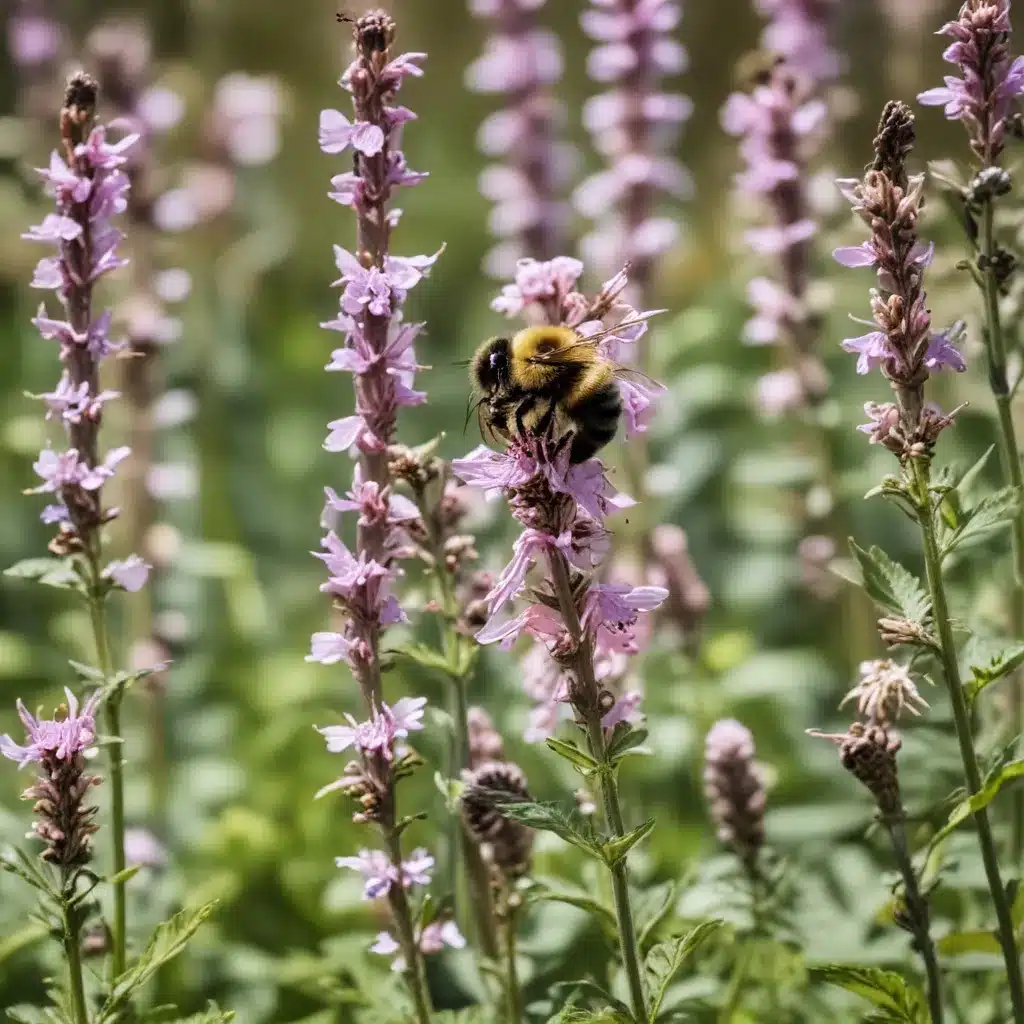
Pollinators, like the humble but hardworking bee, play a vital role in the health and vitality of our ecosystems. These incredible creatures pollinate over 75% of the world’s flowering plants and crops, ensuring the continued abundance of the foods we love and the natural landscapes we cherish. Yet, bee populations are in decline due to habitat loss, pesticide use, and climate change. As caretakers of Crooked Pines Farm, we have an opportunity to make a real difference by creating bee-friendly gardens that provide the essential resources these pollinators need to thrive.
The Importance of Pollinators
Bees, butterflies, moths, birds, and other pollinators are the unsung heroes of our food system and natural environments. Through their tireless work of moving pollen from plant to plant, they facilitate the reproduction of countless plant species, including many of the fruits and vegetables we depend on. In fact, one out of every three bites of food we eat is made possible by the efforts of pollinators.
Beyond their agricultural importance, pollinators are also crucial components of healthy, thriving ecosystems. They help maintain the diversity of native plant species, which in turn support a wide range of other wildlife, from insects and small mammals to larger predators. Without pollinators, entire food webs would collapse, leading to a cascading effect that could devastate our natural world.
Unfortunately, bee populations are facing significant challenges. Habitat loss, the widespread use of pesticides, and the impacts of climate change have all contributed to worrying declines in both managed and wild bee species. This is a global issue, but one that we can address at the local level by creating gardens that cater to the specific needs of our native pollinators.
Designing a Bee-Friendly Garden
When it comes to supporting bees and other pollinators, the key is to design a garden that provides them with the essential resources they need to thrive: nectar, pollen, water, and shelter.
Plant Selection for Nectar and Pollen: Begin by choosing a diverse array of native plants that offer a continuous bloom throughout the growing season. Select a mix of flowers with different shapes, colors, and bloom times to ensure a steady supply of nectar and pollen for a wide range of pollinators. Some excellent options for our region include bee balm, purple coneflower, butterfly bush, and sunflowers.
Incorporating Diverse Bloom Times: In addition to planting a variety of species, be sure to include plants with different bloom periods. This ensures that your garden will provide sustenance for pollinators from early spring through late fall. Early-blooming plants like crocus and lungwort will feed hungry bees and butterflies as they emerge from winter, while late-season asters and goldenrods will fuel them for their autumn migrations.
Providing Water and Shelter: Pollinators also need access to clean, reliable water sources, such as a shallow birdbath, a small pond, or a simple saucer filled with pebbles and water. Additionally, consider incorporating features that offer shelter, such as log piles, brush piles, or native bee houses. These structures provide vital nesting sites and overwintering habitat for many of our native bee species.
Sustainable Garden Practices
Maintaining a bee-friendly garden requires a commitment to sustainable practices that minimize harm to pollinators and promote overall ecosystem health.
Reducing Pesticide Use: Avoid the use of synthetic pesticides and herbicides, which can be highly toxic to bees and other beneficial insects. Instead, embrace organic and integrated pest management techniques, such as hand-picking pests, using beneficial insects to control unwanted populations, and spot-treating problem areas with natural pesticides like neem oil or insecticidal soaps.
Promoting Biodiversity: Encourage biodiversity in your garden by incorporating a variety of plant species, both flowering and non-flowering. This will support a diverse array of pollinators and other wildlife, creating a thriving, self-sustaining ecosystem. Consider adding features like log piles, brush piles, and water sources to provide food and shelter for a wide range of organisms.
Composting and Mulching: Healthy soil is the foundation of a productive, pollinator-friendly garden. Implement sustainable soil-building practices, such as composting and mulching, to improve soil fertility and water-holding capacity. These techniques not only nourish your plants but also create habitat for beneficial soil organisms that support overall ecosystem health.
Habitat Creation for Pollinators
In addition to planting a diverse, bee-friendly garden, you can take further steps to create specialized habitats that cater to the unique needs of our native pollinators.
Nesting Sites for Solitary Bees: Many of our native bees, such as mason bees and leafcutter bees, are solitary species that nest in small cavities or tunnels in the ground or in hollow stems and wood. Provide these bees with suitable nesting sites by leaving bare patches of soil, creating bee hotels, or drilling holes in untreated wooden blocks.
Host Plants for Butterfly Larvae: Butterflies and moths have a two-part life cycle, with caterpillars feeding on specific host plants before undergoing metamorphosis. By incorporating these host plants into your garden, such as milkweed for monarchs or parsley for black swallowtails, you can support the entire life cycle of these important pollinators.
Enhancing Structural Diversity: Pollinators thrive in gardens with a variety of vertical and horizontal structures, including trees, shrubs, perennials, and ground covers. This layered approach provides a range of foraging and nesting opportunities for different species, while also creating a visually striking and ecologically diverse landscape.
By embracing these strategies, you can transform your garden into a vibrant, bee-friendly oasis that not only supports our essential pollinators but also enhances the overall biodiversity and beauty of Crooked Pines Farm. Together, we can make a meaningful difference in the lives of these vital creatures and ensure the long-term health of our local ecosystems.


